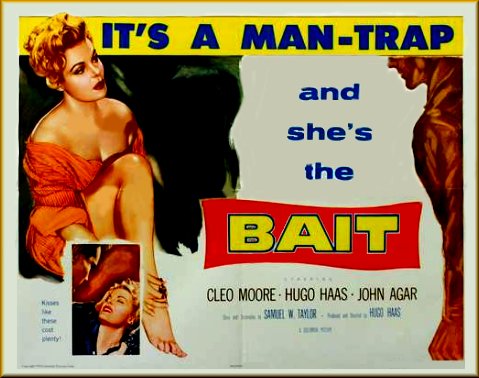
In the 1949 film, Undertow, Scott Brady plays Tony Reagan. Tony used to be a member of the Chicago mob but that’s all in the past now. He served his country in World War II and now, as he tells his old racket friend, Danny (John Russell), all Tony wants to do is settle down and run a hunting lodge in Reno.
However, before Tony can forever abandon Chicago for Nevada, he has to make peace with his future in-laws. He’s engaged to marry Sally Lee (Dorothy Hart). In fact, he’s so in love with her that not even meeting a single teacher named Ann McKnight (Peggy Dow) can distract Tony from his plans. The only problem is that Sally is the niece of a Chicago gangster named Big Jim Lee and, in the past, Big Jim and Tony haven’t always been the best of friends. In fact, the Chicago police are constantly harassing Tony because they’re convinced that he wants to start a gang war with Big Jim. Instead, Tony just wants to make peace with Big Jim before the wedding.
Tony goes to visit Big Jim and …. well, you can guess what’s going to happen, can’t you? If you’ve seen enough film noirs, you know that no one is every totally out of the rackets. No one believes an ex-mobster when they say that they’re no longer interested in making trouble. Even worse, any murder committed with automatically be blamed on anyone who says that they’re no longer a member of the rackets. That’s what happens to Tony. Not only does he discover that Big Jim has been shot dead but everyone thinks that he’s the one who did it. Fleeing through the shadowy streets of Chicago, Tony finds himself not only being pursued by the police but also by the murderers. Everyone wants to either capture or kill Tony.
In fact, the only person who seems to be on Tony’s side is Ann McKnight. Ann lets Tony hide out at her apartment while he tries to figure out what’s going on. Of course, Ann does have a nosy landlady who has no hesitation about letting herself into the apartment whenever she feels like it….
The plot of Undertow isn’t going to win any points for originality. It’s not going to take you long to figure out who is setting Tony up, if just because there really aren’t enough characters in the film for there to be much suspense about who is betraying who. But no matter! The film is still an atmospherically shot and briskly-paced thriller. Undertow was directed by William Castle, who is probably best known for directing campy B-movies like The Tingler and Strait-Jacket. There’s nothing campy about Castle’s direction of Undertow. The majority of the film was shot on location and Castle makes great use of Chicago. When Tony tries to lose the cops that are tailing him, it helps that he’s not running across a soundstage but instead down real city streets, ones that feels alive with tension and danger. There’s also a great chase that takes place in a long and dark corridor in an underground garage.
Scott Brady (who was the brother of tough-guy actor Lawrence Tierney) gives a sympathetic performance as Tony and he and Peggy Dow have a really likable chemistry in their scenes together. Dorothy Hart is also well-cast as the film’s femme fatale, while Bruce Bennett has a few good scenes as a detective who is an old friend of Tony’s. Fans of “classic” matinée idols will want to keep an eye out for Rock Hudson, making a brief appearance in his second film and credited as “Roc” Hudson.


